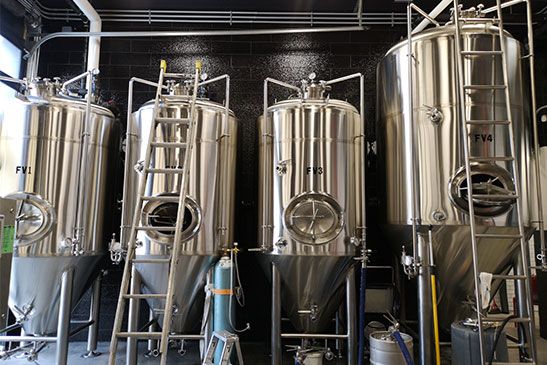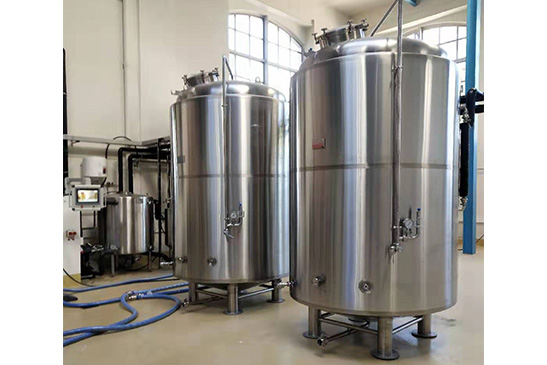What Is Hard Seltzer? The Truth About This Fizzy Fad
Whether it’s television and YouTube commercials or social media posts, it’s hard to escape the latest alcoholic beverage craze: hard seltzer. From the wildly popular triumvirate of White Claw, Bon & Viv, and Truly Hard Seltzer to mainstream beer brands like Bud Light, Corona, and Michelob Ultra, it’s clear that the hard seltzer market is having a moment — a really big moment.
In 2019, hard seltzer sales were at $4.4 billion and those figures are expected to climb more than 16% from 2020 to 2027. But what is hard seltzer, exactly? And is it true that it’s a healthier option than high-calorie, high-sugar booze? Join us as we find out what the buzz is all about with this bubbly beverage.
A Deep Dive: What Is Seltzer Alcohol?
Also known as spiked seltzer, alcoholic seltzer, or hard sparkling water, hard seltzer is carbonated water combined with alcohol and fruit flavoring. Depending on the hard seltzer brand, these fruit flavors can come from real fruit juice or artificial flavoring.
Hard seltzers usually come in a variety of unique flavors. These include citrus, berries, and tropical fruits. Flavors like black cherry, guava, passion fruit, and kiwi are common among many brands, providing a diverse array of options to suit different taste preferences.
Some of the most common flavors include a variety of citrus, berries, and tropical fruits, such as:
Black Cherry
Blood Orange
Cranberry
Guava
Hibiscus
Kiwi
Lemon Lime
Mango
Passion Fruit
Peach
Pineapple
Raspberry
Ruby Grapefruit
Strawberry
Watermelon
Pro tip: To make sure you’re getting a seltzer that hasn’t been spiked with chemical additives or added sugars, always check the ingredients label. You may also have to do a little online sleuthing to learn about the hard seltzer brand’s production processes and make sure what you see is what you get.
Understanding the Process: How Is Hard Seltzer Alcohol Made?
As with any alcoholic beverage (including your favorite bottle of wine), the key to its boozy nature lies in the fermentation process. That’s when yeast consumes any sugars that are present and converts them into alcohol. In winemaking, those sugars come from harvested grapes. For hard seltzer, it typically comes from straight-up fermented cane sugar. It could also come from malted barley, although technically that would make it a flavored malt beverage like Smirnoff Ice.
The trend of hard seltzers indicates a shift in consumer preferences towards ready-to-drink beverages. These are pre-mixed drinks that provide a convenient alternative for consumers who want to enjoy an alcoholic beverage without the hassle of making one from scratch.
The alcohol content of most spiked seltzers falls in the range of 4-6% alcohol by volume (ABV) — about the same as light beer — although some can be as high as 12% ABV, which is the same amount as the standard five-ounce serving of wine.
Lower alcohol also means fewer calories. Most hard seltzers come in 12-ounce cans and hover around the 100-calorie mark. The amount of sugar varies from brand to brand, but you’ll usually find the most popular hard seltzer brands touting their low-sugar content, which tends to be no more than 3 grams of sugar per serving.
Fermentation tank&Unitank
Hard Seltzer Brewing Process:
1st step : water filter UV going into water tank
2nd step : adding water, yeast , nutrient, sugar into fermenting tank +auto cleaner + auto stirrer
3rd step: leaving to ferment 5 days
4th step: removing yeast
5th step: transferring into a new tank to add flavoring and preservatives, auto cleaner, auto stirrer, cool + inline carbonation
6th step : kegging
7th step : Washing CIP unit
Hard Seltzer Brewing Equipment:
- RO water treament system
- Sugar water stiring tank
- Fermenter, Unitank
- Subsidiary adding system
- Cooling system
- Cleaning unit
- Keg filling and washing machine
- Cans filler as option.
Bright beer tank
Post time: Aug-09-2023



